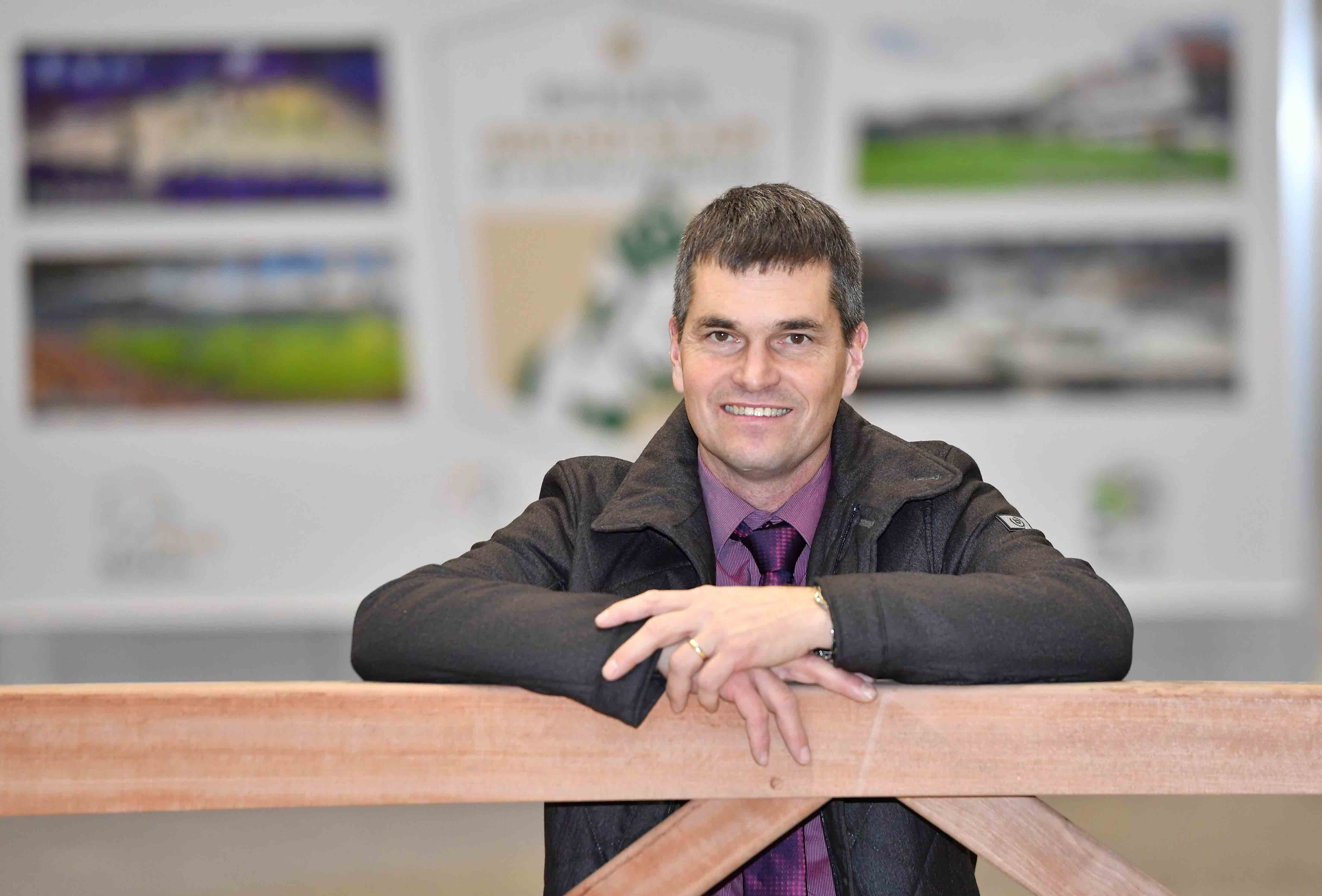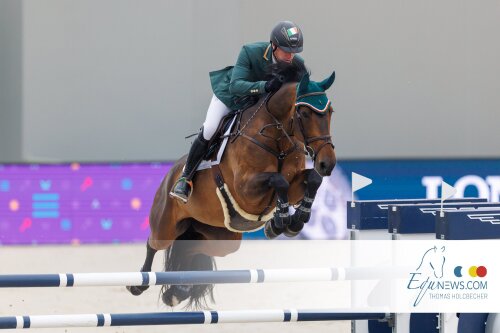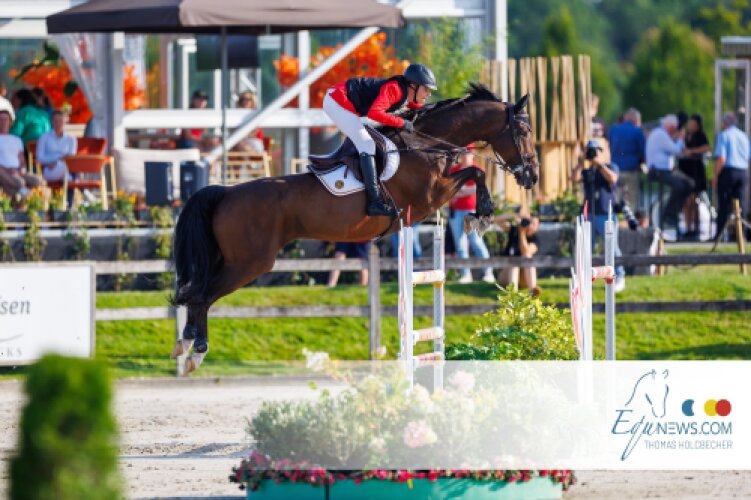Gérard Lachat is the course designer at the CHI Geneva competition. He started his career as a rider but after his boss told him at a very young age that becoming a course designer would help him in his career, he completed his first course and he was hooked immediately. In this interview he explains why he became a course designer and what he has prepared for the Rolex Grand Prix on Sunday.
You must be delighted that this year’s edition of CHI Geneva is going ahead, after last year’s cancellation due to COVID-19?
Yes, very much so, the last year has been extraordinary. We haven’t been able to see the horses compete as much and as regularly, as in normal times, so we’ve taken this into account when designing the course, and we’re very excited to see them compete here once again.
Why is CHI Geneva such a special event?
For me, it’s special, as it’s one of the biggest indoor arenas in the world. With the event being held in Switzerland, that also makes us incredibly excited, and proud. The event is incredibly well run, the horses can arrive by plane, people can get here by foot, it’s an exceptionally well-organised event, which is very rare. The event has a lot of staff who are experts in their field, who we love to work with. It really is one of the most special events on the equestrian calendar.
Can you tell us a little bit about what you’ve prepared for the Rolex Grand Prix – the fourth Rolex Grand Slam Major of the year – on Sunday?
Of course, we’re preparing something that will be slightly more difficult, as those competing are the best in the world. CHI Geneva and The Dutch Masters have the same formats, while Spruce Meadows and Aachen have a different system. At Spruce Meadows and Aachen, the horses and riders have to do two rounds on an outside course with a lot more obstacles. Here we only have one round, so we try to make it a slightly longer route than normal, with 14 jumps and 17 or 18 efforts. There are lots of different factors for us to consider, so we do our best to make a course that is enjoyable for both horse and rider. The course needs to be difficult and big enough, and we need to have the jumps at a decent height of just over 1m60. We won’t be increasing the oxers this year, and we certainly won’t be going to the extreme with the course. The plan is that this year’s course will be relatively similar to 2019’s, which was quite classic. The horses will be required to work a bit harder this year, with faster obstacles and more positivity needed, but in the grand scheme of things, it’s a similar style to previous years. This isn’t the time to be arranging a special course, it’s better to keep the classic style.
How many clear rounds are you expecting?
This is always the most sensitive question. In my opinion, the ideal scenario for the public, the competition, the sponsors, is when there are eight riders who go clear. With this course, and the calibre of the competitors, all the horses and riders have a chance, so let’s wait and see.
Do you have a favourite rider for the Rolex Grand Prix?
It’s very difficult to pick a favourite out of the 40 riders, as they really are the best in the world, and they all have the opportunity to win. There are obviously factors that we have to take into account, such as the bond between horse and rider, then there is always a degree of luck. All we can wish for is the rider that is the most in form on the day wins the Rolex Grand Prix. There are a lot of potential outcomes in the lead up to Sunday, but it’s very difficult to decide, as we have so many of the best riders and some of the best horses in the world competing. It’s the same scenario every year, where it’s next to impossible to pick a winner.
Could you tell us a bit about how you became a course designer?
I started off my career as a rider, and my boss told me early on that I should become a course designer, as this would help me in my career. I completed a course, and that was it really, I was hooked. At 18 years old, I designed my first course at the nationals. I then had the opportunity to come here to the Palexpo with my boss Hermann von Siebenthal, who was the head course designer, who helped me design my first course here at this venue. After this, I was lucky enough to work with some of the best, such as Leopoldo Palacios, and Rolf Lüdi, who was my mentor, and whom I assisted at the World Championships. He played a big role in my career, and it’s thanks to him that I am where I am today. I can’t forget the show organisers, as they put their faith in me, which I’m very grateful for. In my fourth year here, I worked with Louis Konickx, who is a great friend, but also an excellent designer, who has a huge amount of experience, much more than me! He’s here this year, and always gives me advice and reassurance, which always helps, especially when I’m under pressure. Over the years, I’ve found that this is a fantastic thing to have at these types of shows.
What is your favourite aspect of the job?
The ability to be creative is wonderful, to be able see my designs come to life is amazing. I also enjoy determining the difficulty of the courses and finding the balance. Of course, I also love watching the horses jump. The teamwork is a great, but crucial part of the job, as without the team, we aren’t able to be designers. Without all the assistants, the group heads, the groundsmen and women, as well as many others, we would be nothing. It’s the interpersonal contact that is great, with these people, with the riders. We have lots of contact with the riders, who consistently give us their feedback, sometimes they can’t describe why something on the course doesn’t work, but it definitely helps us not make the same mistake twice. These types of relationships that are fostered in this industry, with people that are also passionate about horses, is a real perk of the job.
If you weren’t a course designer, what would your job be?
I would definitely be working with horses in one way or another, as it really is my passion. I’d probably ride more, maybe compete in some national tournaments. I’d also work more with younger horses, focusing on their training, which is something that I’ve always dreamed about. My wife and I have a business at home, where we have around 100 horses. It’s thanks to her that I’m able to do what I do, as the two or three months of the year that I’m away, she takes care of everything. I’ve always loved horses, so if I couldn’t be a course designer, I’d spend more time with the younger horses back at home.
What are your thoughts about the Rolex Grand Slam and the concept behind it?
The concept is brilliant, it’s a great motivator for the riders, and the system of striving to win consecutive Grand Slams is fantastic. The Rolex Grand Slam brings the best riders in the world together, as it’s made up of the best facilities and the best shows in the world.
Source: press release Rolex Grand Slam of Show Jumping



